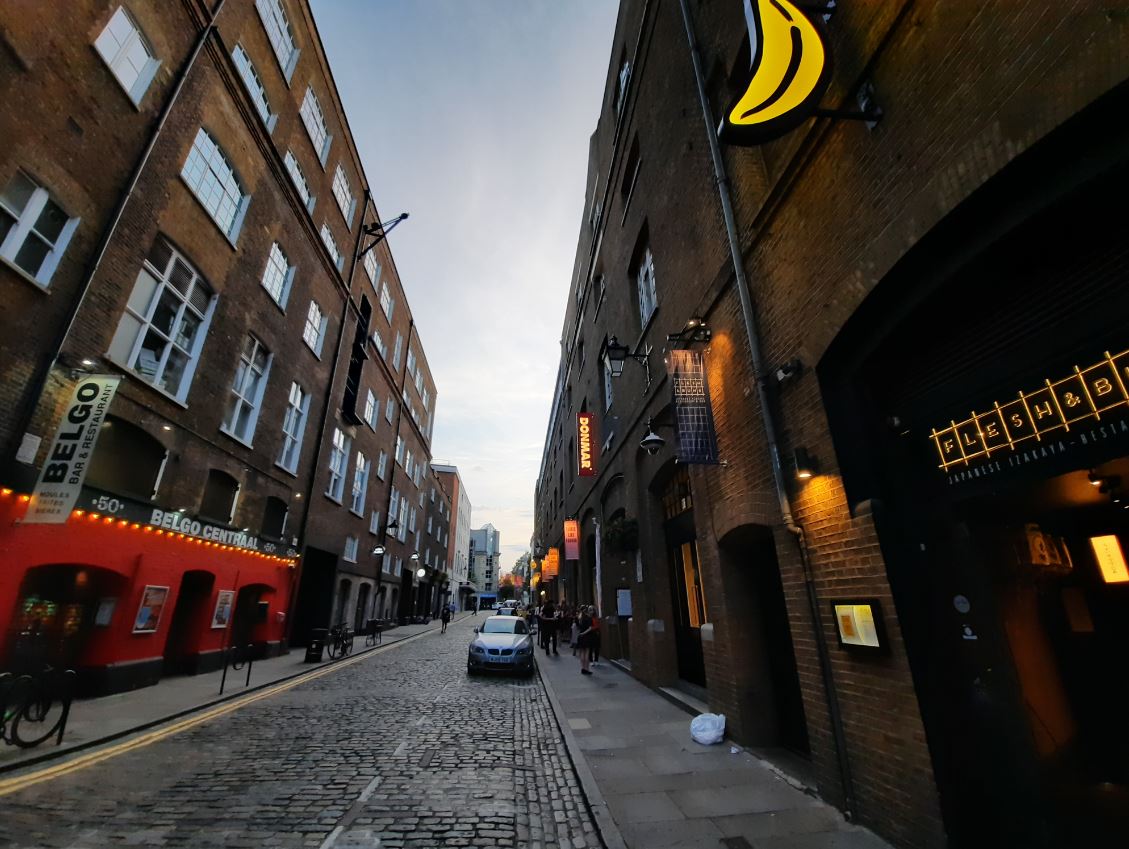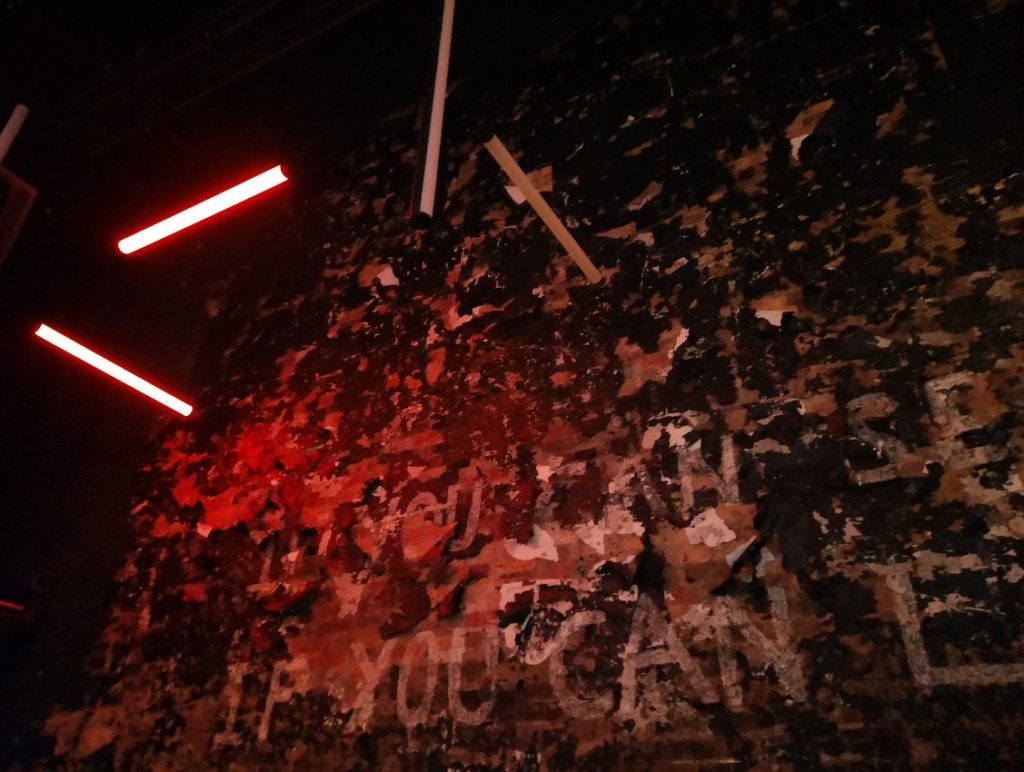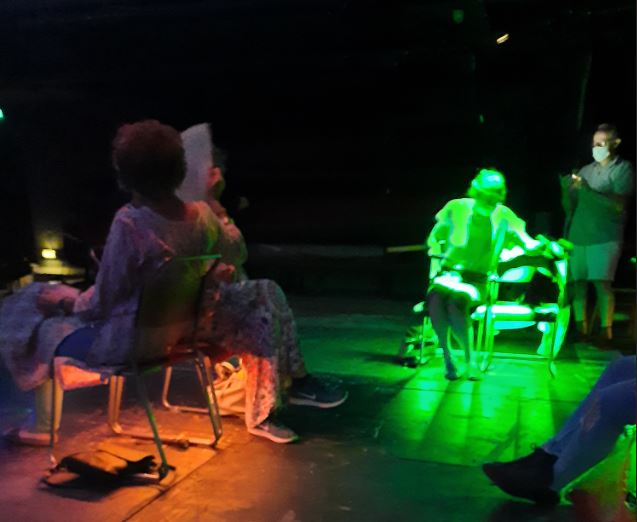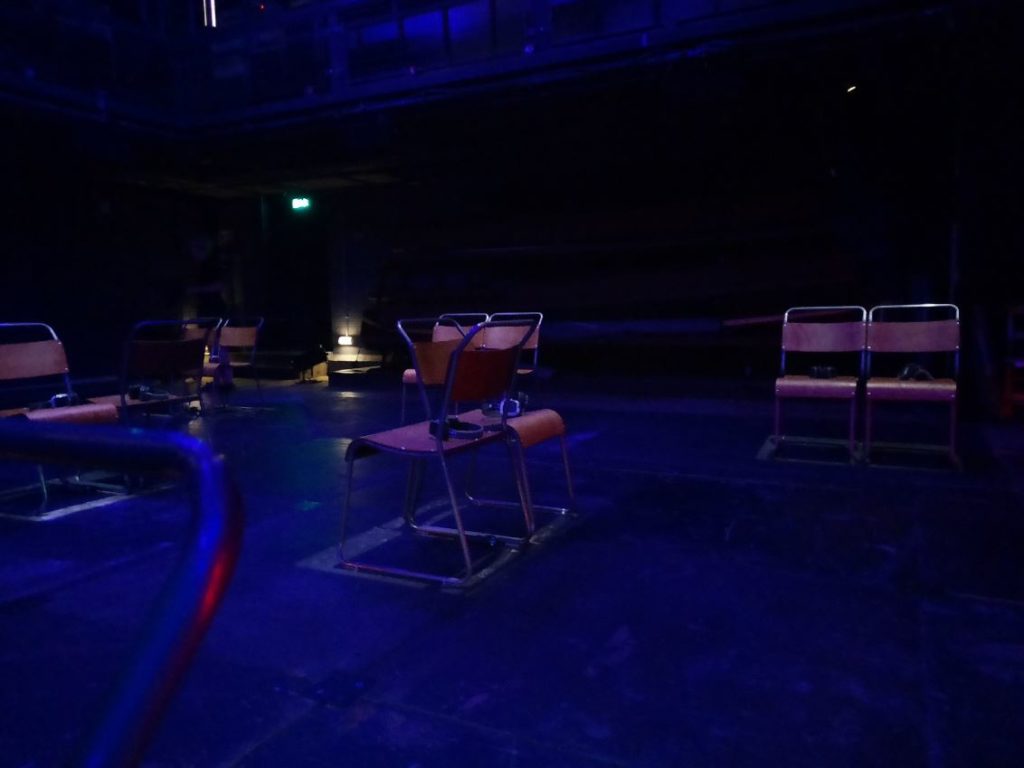The Covid Diaries 12: Blindness, Donmar Warehouse (LAST CHANCE TO SEE)
A review of the sound installation Blindness at the Donmar Warehouse. In which I was thrilled to be back in a theatre, and so impressed by what the Donmar has produced.
Back in a Theatre!
Oh how I have missed live theatre! And this isn’t quite live theatre, but it’s very close. In some respects it maybe even more creative and more forward-thinking. The Donmar describe Blindness as a ‘sound installation’. It is based on Jose Saramago’s 1995 novel of the same name (in English translation at least); the story of an epidemic that sweeps a European city, leaving people seeing nothing but white. Sufferers initially isolate in disused facilities, but society increasingly breaks down both within and outside quarantine. What a story for 2020, huh?
Like the novel, the central character in this sound installation is a doctor’s wife. Her husband, an ophthalmologist, is among the first wave of victims of ‘the white sickness’. Juliet Stevenson plays the part of narrator and Doctor’s Wife. There are few other actors in the recording – Stevenson carries 90% of the action herself. Or maybe 50%, as I have to give great credit to the Donmar team who are behind the lighting, sound, and stage design for Blindness for additional dramatic tension and atmosphere.
What is a Sound Installation, Anyway?
So how Blindness does work as an installation? Well, visitors sit on what would normally be the stage of the Donmar Warehouse, alone or in household pairs. The pairs of seats are facing in different directions; those around the edge face inwards, while those seated more centrally sit in a ‘love seat’ set up, looking in opposite directions. This is already quite disorienting. It puts the viewer in an active, observational dynamic with fellow-audience members, and even with their theatre-going companion. It’s very different physically to the normal experience of being an onlooking and passive theatre-goer. Throughout the 70 minutes, you can see the reactions of those around you every time the lights come up, until they (and you) become almost part of the action as well.
Each seat has a pair of headphones. These headphones (courtesy of sound designers Ben and Max Ringham), let me tell you, are absolutely amazing. I saw an Instagram post about how the Donmar recorded Blindness, with Stevenson speaking into a sort of dummy speaker head to record binaural sound. The effect is incredible.
Thanks to the binaural sound you can hear exactly where she ‘is’ at any given moment, both directionally and in terms of distance. This gives an alternate sense of space than the occasional evidence of your eyes would suggest. Both myself and my companion experienced goosebumps at certain points from the effect of hearing her whispering over our shoulders. It’s incredibly effective, especially given that Stevenson moves fairly seamlessly throughout the 70 minutes between narration and direct involvement in the action. The possibilities of this method of recording and transmitting the sound really coming into their own for the latter.
Excellent Design All Around
Now for the design and lighting design, by Lizzie Clachan and Jessica Hung Han Yun respectively. The very stripped-back set is fitting for a tale of societal breakdown. In fact, it’s so bare bones that you are really seeing the ‘guts’ of the building. It’s the first time it occurred to me that the Donmar Warehouse is literally a warehouse. I know, I’m slow on the uptake… The lights – long bulbs with different colours and effects – start off high up and move down to eye level when the pace of the story picks up. Again this is disconcerting – so much more ‘in your face’ both literally and figuratively than a traditional theatre experience.
It’s all just so clever. Sudden flashes or dim trickles of light puncture long periods of blackout. Always enough to remind you of the darkness, and to see others reacting around you. At times the fabric of the building represents a cityscape, an apartment. Some of it can be a bit much for some viewers; an attendant will come get you if you raise your hand (or switch on the torch under your seat during the blackout periods). One fellow viewer took up this option during my session. But it’s so interesting and creative and thought-provoking that I have to put Blindness in the small bucket of ‘good things which have come out of coronavirus, and which I hope others build on’.
Audiences may still need some time to adapt to what is expected from them during a sound installation, however. Blindness ends rather abruptly, so during my ‘session’ it was only once we were removing headphones and starting to exit that an enthusiastic round of applause began. The etiquette of the whole thing is still a bit uncertain.
Sight Loss / Blindness Gain
Those who are interested will find some additional reading and a podcast on the Donmar’s website. This investigates blindness in a more critical way – including reactions from blind people to Saramago’s novel; the social construct of disability which leads many to feel a sense of horror at the idea of a sudden epidemic of blindness; and the positive benefits for all from originally ‘accessible’ technologies like audio description.
Interestingly, although this adaptation was in the works before Covid-19, it seems like our current pandemic may have actually created a more positive relationship with sight loss/blindness gain (listen to the podcast) than might otherwise have been the case. It was already being refined from a regular adaptation to a monologue; the current restrictions must have been what guided its transformation into an almost-one-woman sound installation. While it’s not in any way trying to recreate an experience of being blind, this does mean that Blindness asks you to rely on your sense of hearing in a very different way than a standard theatre production. Reading and listening to production consultant Professor Hannah Thompson on these and other issues allows deeper engagement with the production.
Final Thoughts on Blindness
A few final thoughts on the organisation/preparation the Donmar have undertaken to be able to stage this sound installation. And four times a day no less! I can say first of all that I was hugely impressed. It was like a military operation: from being prepared by a visitor host while queuing outside; to having distanced spots on the floor to stand the whole way from door to seat; to being ushered in and out household by household; it was a tight operation that was obviously well trained and practiced. They even had instructions on what to do if your household members exited the bathroom at different times.
I guess that, being pretty much the first theatre to put an event on, they are under pressure to do it well and not bring the wrath of any authorities upon themselves. In any case they’ve really done an excellent job. It felt safe and secure throughout, and I was able to focus entirely on the installation itself. I can’t wait for more theatres to open up and start staging creative productions of one type or another now that restrictions are being further loosened (thank you Bridge for going next!). The bar has been set super high with the Donmar staging Blindness as a first foray back into theatre.
On its own merits: 4.5/5
Implementing Covid rules: 5/5
UPDATE: Blindness extended until 5 September 2020
If you see this after your page is loaded completely, leafletJS files are missing.





5 thoughts on “The Covid Diaries 12: Blindness, Donmar Warehouse (LAST CHANCE TO SEE)”